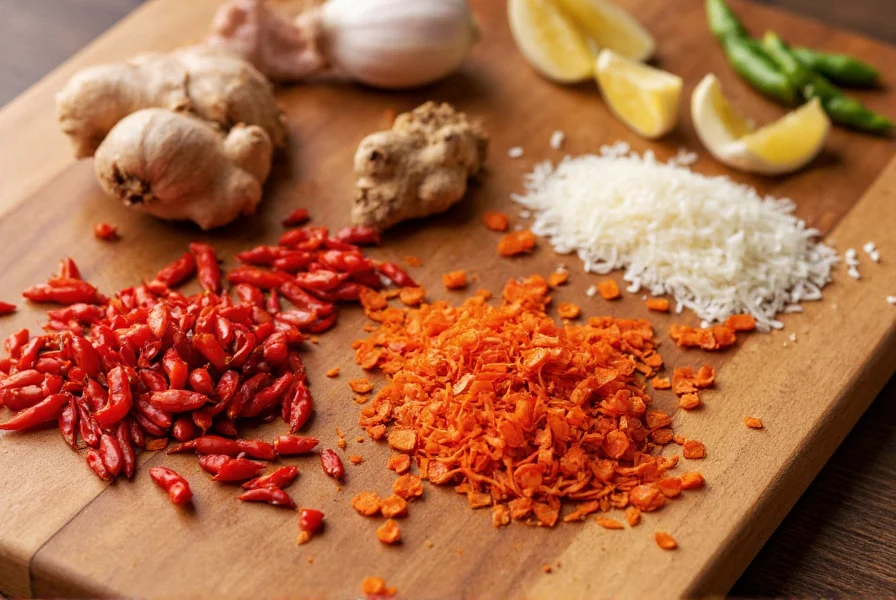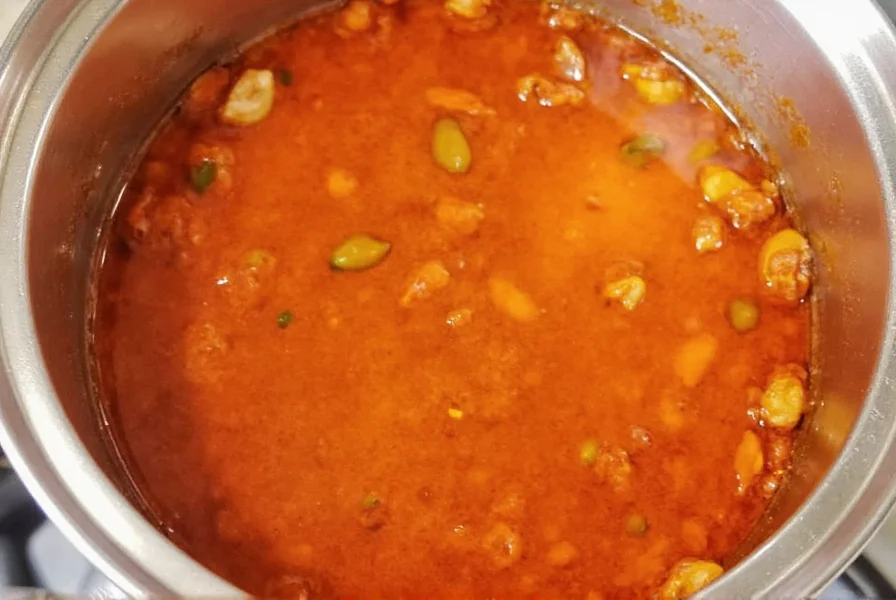Making exceptional chili oil at home is simpler than most people realize, yet the technique makes all the difference between a flat, one-dimensional condiment and the complex, aromatic oil that elevates dishes from ordinary to extraordinary. While store-bought options exist, homemade chili oil offers superior freshness, customizable heat levels, and authentic flavor profiles that commercial versions often lack.
Essential Ingredients for Authentic Chili Oil
The foundation of great chili oil lies in ingredient quality and proper ratios. Unlike commercial products that often rely on artificial flavors and excessive preservatives, authentic homemade chili oil uses just a handful of fresh components:
| Ingredient | Recommended Quantity | Function |
|---|---|---|
| Neutral oil (canola, peanut, or avocado) | 1 cup | Base carrier that won't overpower chili flavor |
| Medium grind chili flakes | 1/2 cup | Provides heat and color (use multiple varieties for complexity) |
| Sichuan peppercorns | 2 tablespoons | Creates signature tingling sensation (ma la) |
| Fresh garlic, smashed | 3 cloves | Adds aromatic depth |
| Fresh ginger, sliced | 1 tablespoon | Contributes warm, earthy notes |
For the chili flakes, consider blending different varieties like Tibetan, Korean, and Chinese to create layered heat rather than a single sharp burn. The medium grind provides optimal surface area for oil infusion without creating sediment that's difficult to strain.

Step-by-Step Preparation Process
Temperature control represents the most critical factor in making professional-quality chili oil. Many home cooks make the mistake of using oil that's too hot, which burns the chilies and creates bitterness, or too cool, which fails to properly extract flavors.
- Combine chili flakes, Sichuan peppercorns, garlic, and ginger in a heatproof bowl
- Heat neutral oil in a saucepan to precisely 250°F (use a thermometer for accuracy)
- Remove oil from heat and let rest for 30 seconds to stabilize temperature
- Slowly pour 1/3 of the oil over the spice mixture while stirring constantly
- Wait 5 minutes to allow initial infusion without scorching
- Add another 1/3 of the oil and stir gently
- After 10 minutes, add remaining oil
- Cover and let steep at room temperature for 24 hours
- Strain through a fine-mesh sieve lined with cheesecloth
- Transfer to sterilized glass bottles for storage
Temperature Guide for Perfect Infusion
Understanding oil temperature ranges prevents common mistakes that ruin homemade chili oil:
- Below 200°F: Insufficient for proper flavor extraction; results in weak, underdeveloped oil
- 200-250°F: Ideal range for balanced infusion without burning (medium heat)
- 250-300°F: Risk of scorching delicate components; use only for initial "bloom" technique
- Above 300°F: Guaranteed burning of chilies; creates bitter, acrid oil
For beginners, the three-stage pouring method described above provides margin for error while still achieving professional results. Experienced makers sometimes use the "single pour" technique with oil at precisely 275°F for more intense flavor, but this requires greater precision.
Regional Variations and Customizations
Authentic chili oil varies significantly across Chinese regions, each with distinctive characteristics that home cooks can replicate:
Sichuan Style
Features pronounced ma la (numbing-spicy) profile with generous Sichuan peppercorns. Often includes star anise and cassia bark for complexity. The traditional ratio uses 3 parts chili flakes to 1 part Sichuan peppercorns.
Shaanxi Style
Known for its vibrant red color and intense heat, Shaanxi chili oil typically uses darker, more pungent chili varieties. It often incorporates cumin and fennel seeds, reflecting historical Silk Road spice influences.
Homestyle Adjustments
- Milder version: Replace 1/3 of chili flakes with paprika
- Extra aromatic: Add 1 cinnamon stick and 3 star anise pods
- Vegan option: Ensure no animal products in chili blend (some commercial flakes contain shrimp powder)
- Quick version: Skip the 24-hour steep; use after 4 hours (less complex flavor)
Proper Storage and Shelf Life
Homemade chili oil maintains peak quality for 3-4 weeks when stored properly. Unlike commercial products with preservatives, natural chili oil has a limited shelf life that requires careful handling:
- Always use sterilized glass containers with tight-sealing lids
- Store in a cool, dark place away from heat sources
- Never introduce moisture into the container (use clean, dry utensils)
- Refrigeration extends shelf life to 2-3 months but may cause cloudiness (harmless)
- Discard if mold appears, smell changes, or oil becomes rancid
For extended storage, consider making smaller batches more frequently rather than large quantities. The flavor of freshly made chili oil noticeably surpasses older batches, especially regarding aromatic components that degrade over time.
Usage Ideas and Pairing Suggestions
While often associated with noodles and dumplings, versatile chili oil enhances numerous dishes:
- Stir 1-2 teaspoons into ramen or pho broth for instant depth
- Drizzle over steamed rice with soy sauce for quick condiment
- Use as base for dipping sauces (mix with vinegar and sesame oil)
- Add to marinades for meats and vegetables
- Stir into mayonnaise for spicy sandwich spread
- Drizzle over roasted vegetables before serving
- Enhance pizza with a few drops before baking
The key to successful pairing is understanding that chili oil contributes both heat and aromatic complexity. Start with small amounts and adjust to taste, as the intensity builds over time.
Common Mistakes to Avoid
Even experienced cooks make these frequent errors when preparing homemade chili oil:
- Using oil that's too hot - Creates bitter, burnt flavors instead of rich infusion
- Skipping the resting period - Prevents full flavor development and integration
- Using old or stale chili flakes - Results in weak heat and flat flavor profile
- Improper storage containers - Plastic can absorb flavors and degrade over time
- Adding fresh herbs too early - Causes rapid degradation of delicate herbal notes
- Not straining properly - Leaves sediment that can spoil faster than the oil
For optimal results, always use fresh spices and monitor oil temperature carefully. The difference between good and exceptional chili oil often comes down to these precise details rather than ingredient complexity.











 浙公网安备
33010002000092号
浙公网安备
33010002000092号 浙B2-20120091-4
浙B2-20120091-4